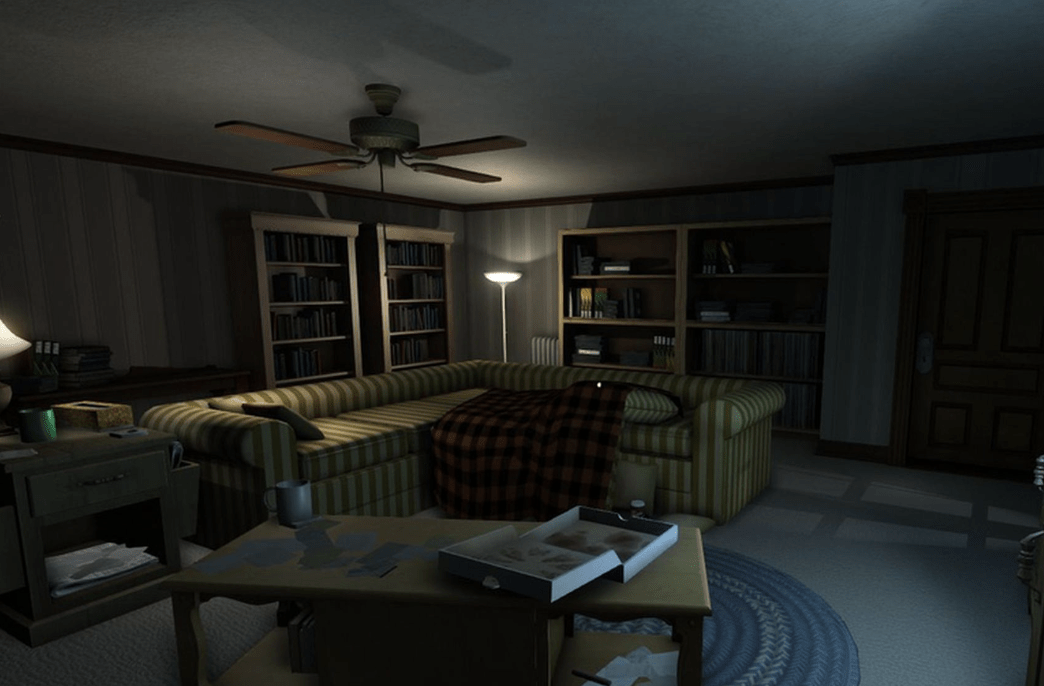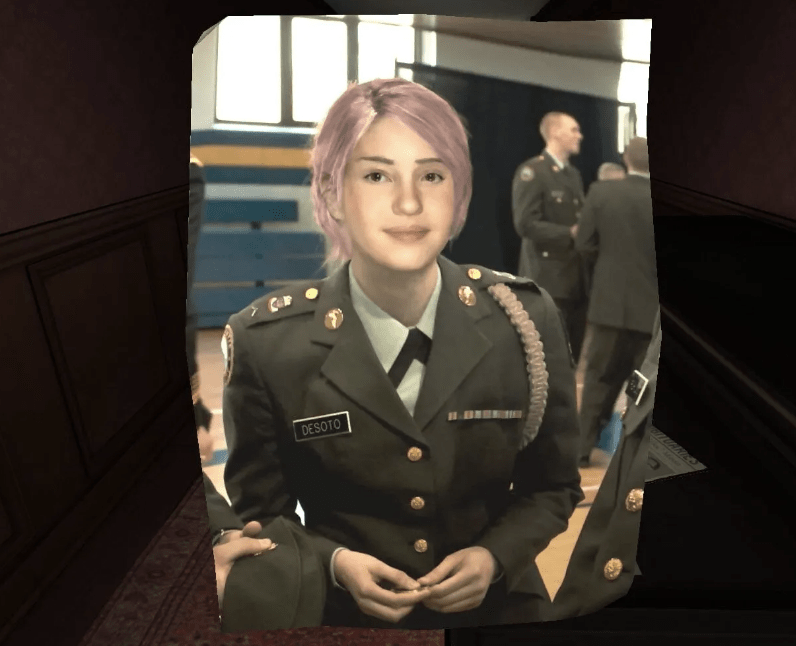Gone Home was developed and published by the Fullbright Company, with designer Steve Gaynor. It is more of a thoughtful story than a mechanics-based game, so I would imagine that the intended audience would be 12+. Younger children should be able to play this, as well, although some emotional maturity would help in fully appreciating the game.
The core mechanics of this game are similar to those in escape room games, as you walk around using a controller (in my case, this was an iPad), examine things to discover what happened to your family.
Loops play a central role in this game. The moment you start, you’re placed in front of the locked front door. You have to look around the space in order to find the clues to go onto the next space, upon which new things about your sister are revealed using audio. The first room does a good job at giving you the practice needed.
.
As you go onto the next rooms, you discover that your sister Sam, who suffered as her house was considered to be weird or spooky due to an incident around their uncle, made a new friend who she had a crush on. Lonnie, the friend, is a Junior ROTC. I got to the point where the parents forbade her to close the door of the room when Lonnie and she was in the house.

I was so used to jump scare escape rooms, so I was fully ready all the time to see a ghost pop up, and it was a relief that the game was completely safe from that. The moment you think you saw blood in the bathroom, which turned out to be hair dye…
What worked: I liked how the story developed with the space and that there was an arc. As you go onto the next room and read more notes, memos, and etc., you become more engaged with the narrative behind your sister’s childhood love. Also, it really documents the journey of your teenage sister realising her sexuality greatly, which is the arc of the story (the initial meeting with Lonnie, becoming good friends, and becoming more than friends). You discover more about this as you move to the next space.
What could be improved: Although I liked the overall arc of the story, I liked it less than Edith Finch for a few reasons. First, it didn’t really seem like each room had a unique significance or a character to it, and while navigating through it was fun on its own, I was often confused in terms of what my next quest was, or why there are these things lying around telling the story, which was not as convincing. I was really fascinated by the world of Edith Finch, because I thought the narrative and the mechanics were really seamless, and this one does less of a good job at it. The mechanics were sometimes a bit confusing, as there were too many objects and I didn’t know if I should examine all the bathroom gadgets. If I was redesigning the game, I would remove a few objects that I can examine, like faucets, shampoos, etc.
Overall, loops (examine the room and the stuff inside to find more about your sister’s story) and arc (your sister realises her sexuality by feeling love towards Lonnie) is advanced using the architecture of the house, and builds the sexuality narrative well. The mystery was definitely there, but I found it personally sometimes a bit difficult to balance between the anxiety at something popping up versus the very lovely central narrative arc.



